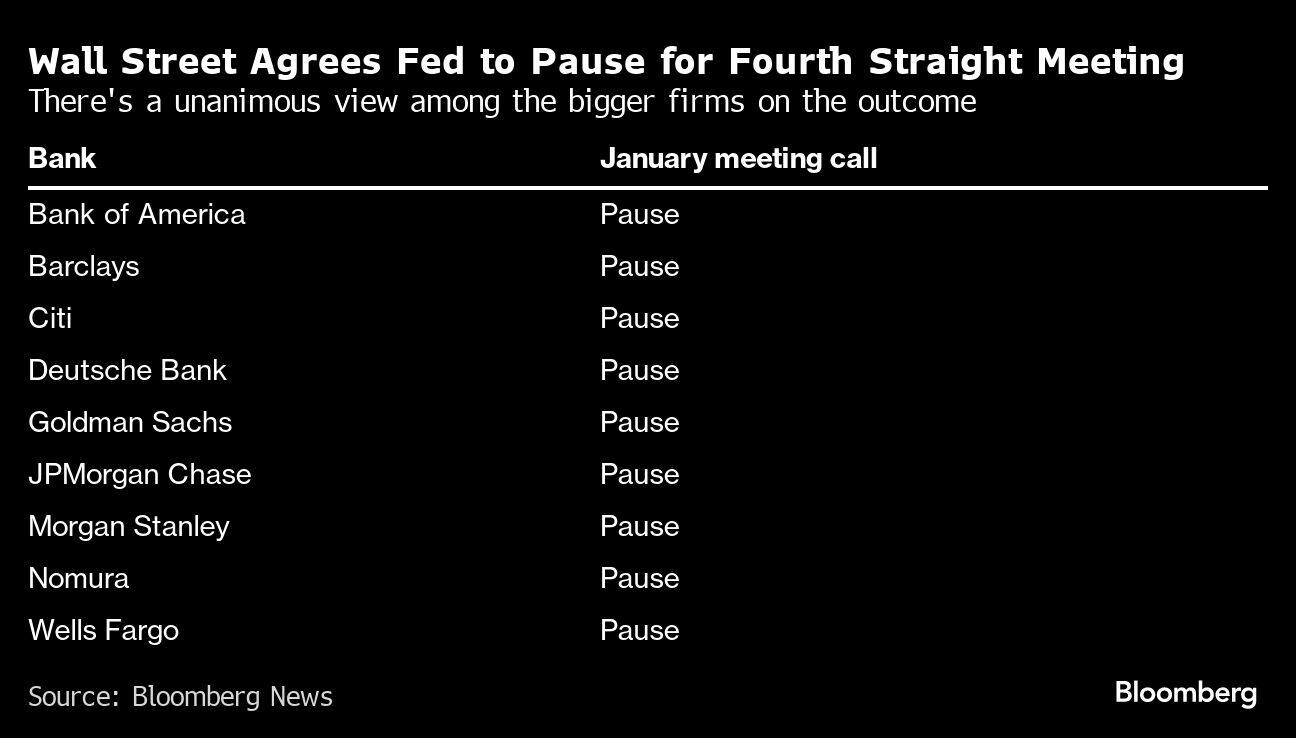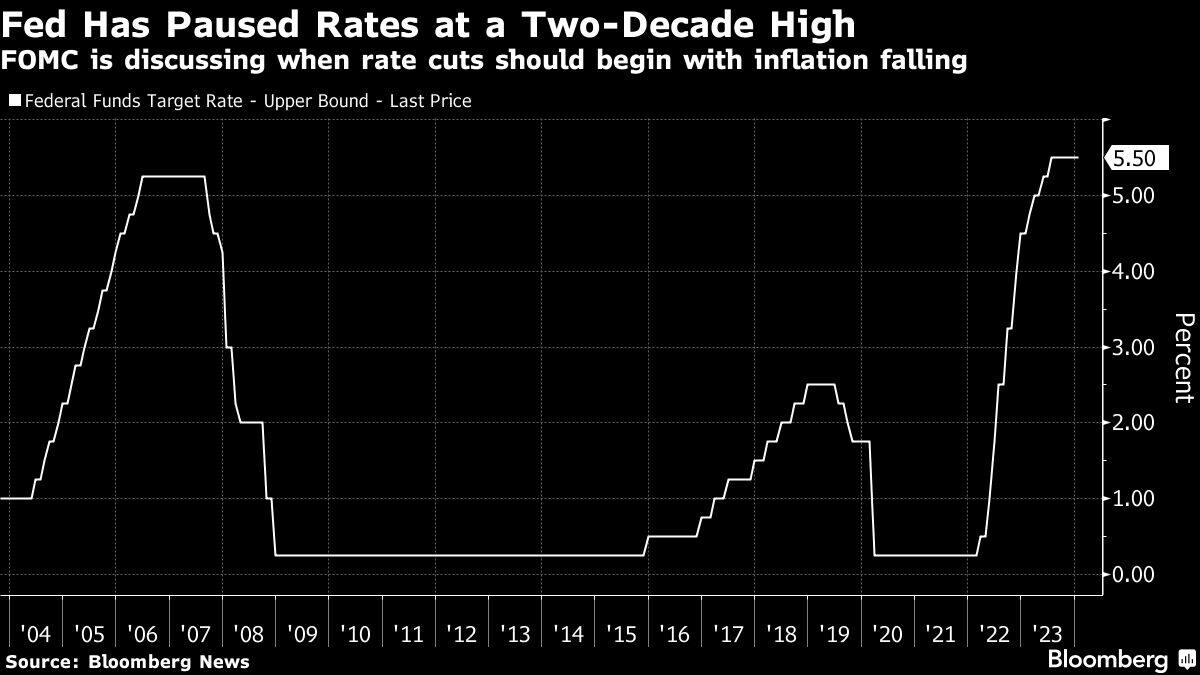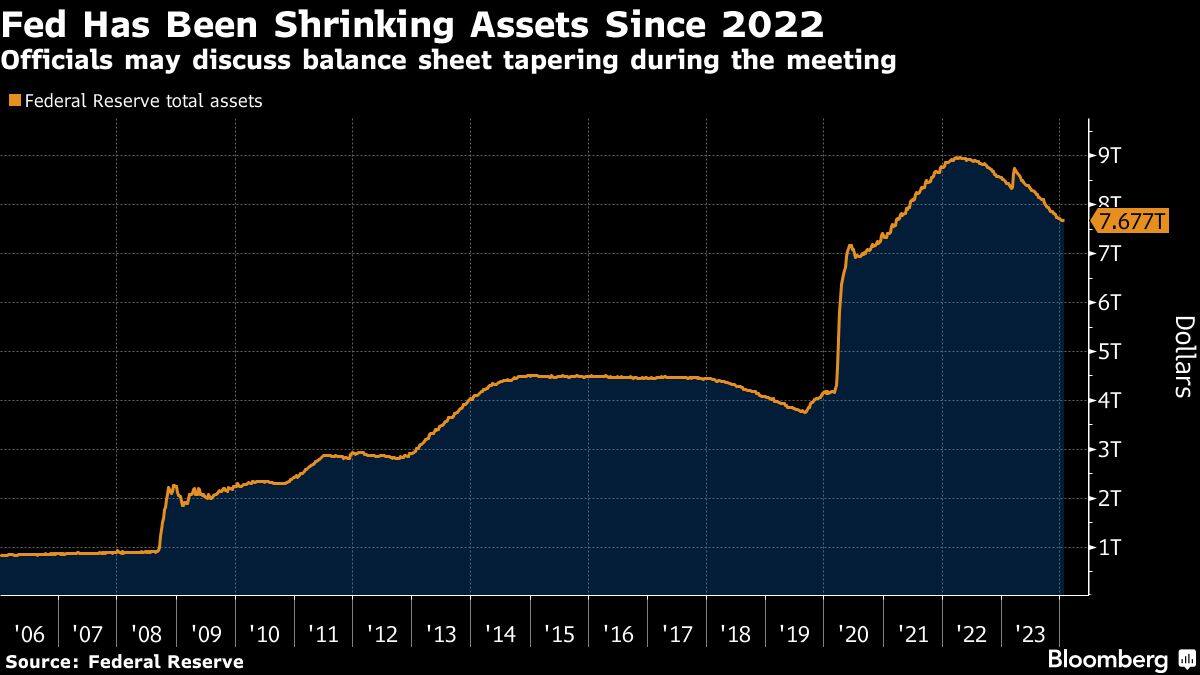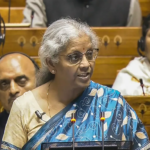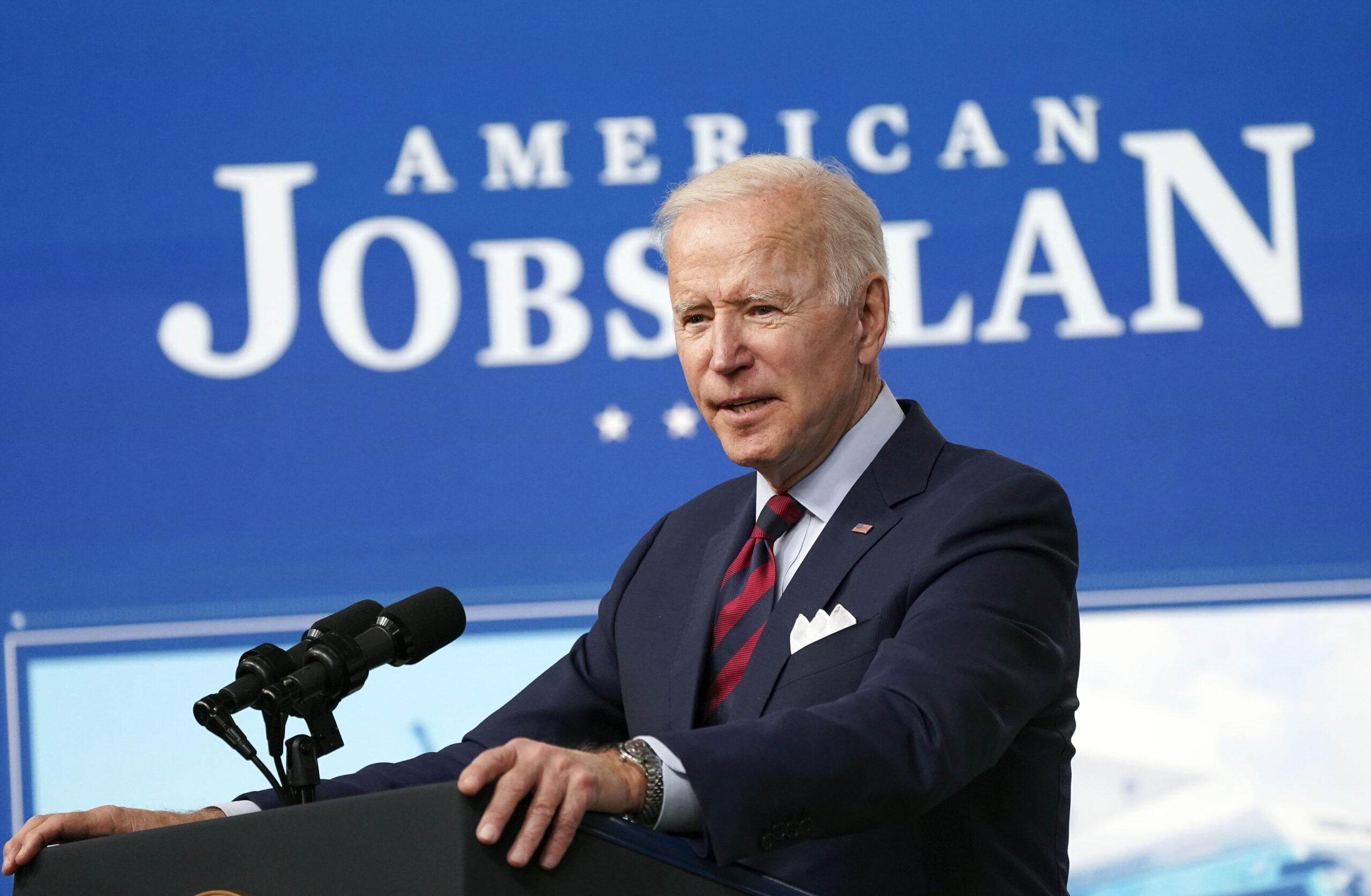
The Federal Reserve will likely hold interest rates steady for a fourth straight meeting but avoid signaling an imminent interest-rate cut.
The Federal Open Market Committee is poised to keep rates in a range of 5.25% to 5.5% at its two-day policy meeting ending Wednesday, a 22-year high first reached in July. The rate decision and accompanying statement will be released at 2 p.m. in Washington. Chair Jerome Powell will hold a press conference 30 minutes later.
Investors see a roughly 40% chance the central bank will lower rates for the first time in March, nearly eight months after the last rate hike, but most Fed officials have said it’s too soon to speculate on such a pivot. Powell may say he’s gratified by recent declines in inflation while continuing to indicate little urgency to cut, pointing to a solid labor market and an economy that’s growing strongly.
“You can’t deny the fact that inflation has come down a lot, and I don’t think they want to,” said Seth Carpenter, chief global economist at Morgan Stanley. “On the other hand, I don’t think there’ll be a big banner up that says ‘Mission Accomplished.’”
The Fed’s preferred gauge of underlying inflation cooled to an almost three-year low in December. Excluding food and energy, the measure was up 1.9% on a six-month annualized basis, trailing the Fed’s 2% target for a second month.
What Bloomberg Economics Says…
“Officials’ main focus at the January FOMC meeting will be laying out when and how to communicate about rate cuts and the tapering of Quantitative Tightening… If the FOMC indeed starts to cut rates in March — as we expect — the definitive communication will likely come from Fed Chair Jerome Powell’s Humphrey-Hawkins testimony in late February or early March.”
— Anna Wong and Stuart Paul
FOMC Statement
The committee may tweak its guidance on interest rates, dropping a reference to a possible “firming” of rates in favor of something neutral, such as “stance of policy,” Carpenter said. Most of the statement is likely to resemble the one published in December.
The FOMC is also expected to reaffirm its long-term goals and monetary policy strategy, as it did at officials’ first meeting of 2023.
Press Conference
Powell is likely to be pressed on whether the Fed is considering rate cuts for March and if the committee’s median forecast in December for three quarter-point reductions this year is still a good reflection of officials’ views. Investors currently expect five or more cuts.
The risk of a re-acceleration in inflation later this year may cause Powell to push back against any near-term rate changes. Earlier this month, Atlanta Fed President Raphael Bostic said the worst outcome would be for policymakers to lower rates and have to raise them again later.
“A cardinal sin of central banking is to cut and have to reverse course,” said Diane Swonk, chief economist at KPMG LLP. “This is the time to push back and stay the course. Markets won’t like it, but the message has been starting to sink in.”
Powell could also be asked about a range of banking issues, including any moves to encourage financial institutions to borrow from its discount window.
Balance Sheet
The FOMC may also begin discussing its $7.7 trillion balance sheet, including when to begin tapering its quantitative tightening program. A decision, however, is unlikely.
Dallas Fed President Lorie Logan said earlier this month the central bank may need to slow the pace at which it shrinks its portfolio of assets amid scarcer liquidity in financial markets.
“They are getting closer and closer to what is the lowest comfortable level of reserves,” said Thomas Simons, senior US economist at Jefferies. “Tapering is very well appropriate at this point.”
New Voters
The January meeting also brings a rotation of new voters among the central bank’s regional presidents, including Bostic, Cleveland Fed President Loretta Mester, the San Francisco Fed’s Mary Daly and Richmond’s Thomas Barkin.
While they may lean a bit more hawkish than the 2023 voters, no dissents are expected at this meeting.
